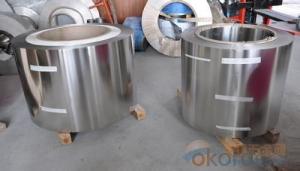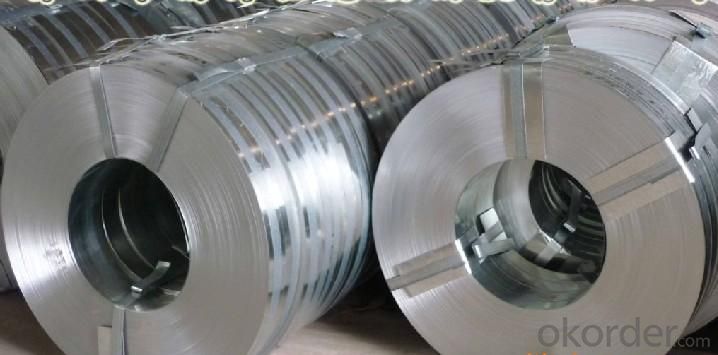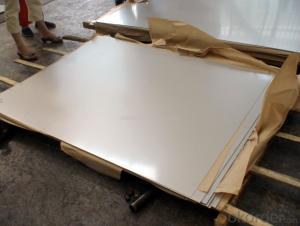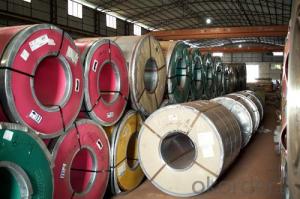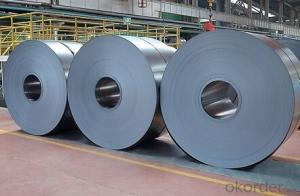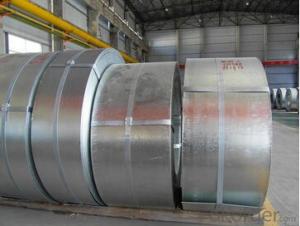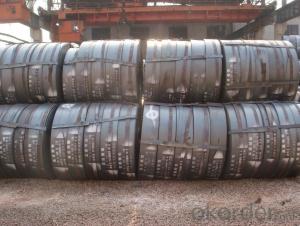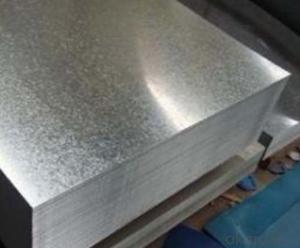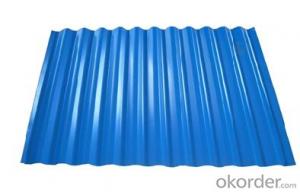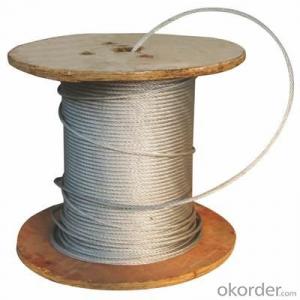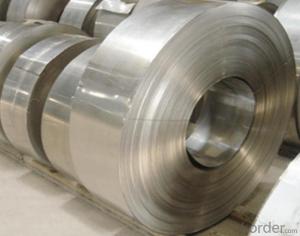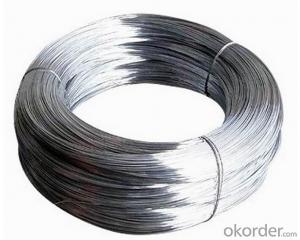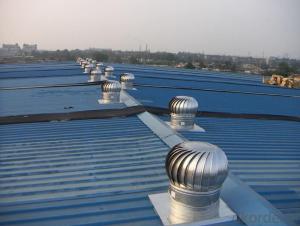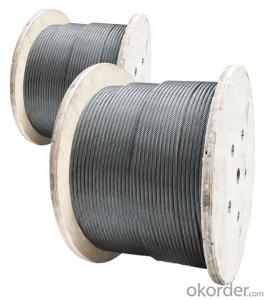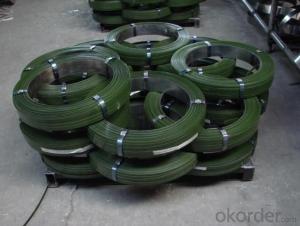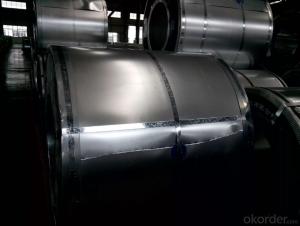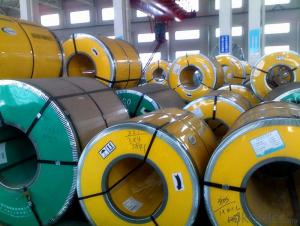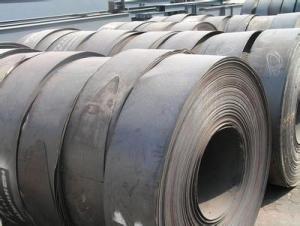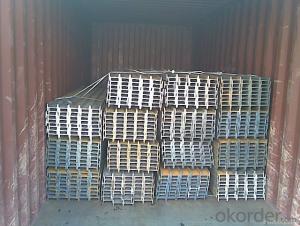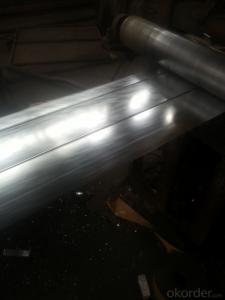Steel Strips Based On The Galvanized Steels
- Loading Port:
- Tianjin
- Payment Terms:
- TT OR LC
- Min Order Qty:
- 25 m.t.
- Supply Capability:
- 10000 m.t./month
OKorder Service Pledge
OKorder Financial Service
You Might Also Like
Steel Strips Based On The Galvanized Steels
1.Structure of Steel Strips Based On The Galvanized Steels
Steel Strips Based On The Galvanized Steels is one kinds of building material on construction. Steel sheet in melting zinc trough, the sticking of a layer of zinc sheet. At present mainly adopts continuous galvanizing process, namely the continuous roll of steel plate in the melt zinc plating tank made of galvanized steel sheet; Alloying of galvanized steel. This kind of steel plate is made by hot dip method, but after the slot, immediately heated to a temperature of about 500 ℃, it make the generation of zinc and iron alloy membrane. This kind of galvanized volumes with good coating of the sex and weldability.
2.Main Features of Steel Strips Based On The Galvanized Steels
| adopt wide hot galvanized strip produced by famous company as Bao Steel which has even thickness |
| we introduce a new complete set of cutting technology |
| keep steady precision |
| reduce waste of material farthest |
| adopt physical technique in order to make the galvanized level thicker |
| enhance the rustproof capability |
| adopt non-chrome passivation technique |
| protect the environment against pollution |
| adopt level pressure technique and inert gases protect technique |
| make the galvanized level brighter |
| delay oxidation phenomenon in natural environment |
3. Steel Strips Based On The Galvanized Steels Images

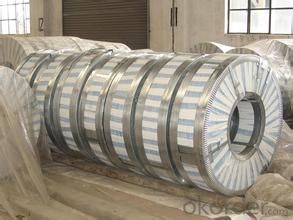
4. Steel Strips Based On The Galvanized Steels Specification
1)Based raw material: Hot rolled steel coils or Cold rolled steel coils
2) Thickness
3) Width
4)Coating mass
5) Spangle
6)Surface treatment
7)Coil inner diameter
8)Painting kind
9)Painting color
10)Painting thickness
5.FAQ of Steel Strips Based On The Galvanized Steels
We have organized several common questions for our clients,may help you sincerely:
①How about your company?
A world class manufacturer & supplier of castings forging in carbon steel and alloy steel,is one of the large-scale professional investment casting production bases in China,consisting of both casting foundry forging and machining factory. Annually more than 8000 tons Precision casting and forging parts are exported to markets in Europe,America and Japan. OEM casting and forging service available according to customer’s requirements.
②How to guarantee the quality of the products?
We have established the international advanced quality management system,every link from raw material to final product we have strict quality test;We resolutely put an end to unqualified products flowing into the market. At the same time, we will provide necessary follow-up service assurance.
③How is the packaging and delivery?
Exporting Package with the steel material cover and the delivery term is based on the project.
- Q: Can steel strips be used as reinforcements in concrete structures?
- Yes, steel strips can be used as reinforcements in concrete structures. Steel strips provide additional strength and durability to the concrete, helping to resist tension and prevent cracking. They are commonly used in applications such as beams, columns, and slabs to increase the structural integrity of the concrete.
- Q: Can steel strips be used in the production of musical instrument strings?
- Certainly, musical instrument strings can indeed be produced using steel strips. A wide range of stringed instruments, such as guitars, violins, cellos, and pianos, frequently employ steel strings. Typically, these steel strips are crafted from top-notch steel alloys that offer exceptional durability and tensile strength. Subsequently, these strips are meticulously wound or threaded around the string's core in order to achieve the desired pitch and tone. Notably, steel strings are admired for their vibrant and resonant sound, which has contributed to their widespread popularity among musicians of diverse genres.
- Q: How are steel strips priced and sold?
- Steel strips are typically priced based on factors such as the type of steel, dimensions, thickness, and quantity required. Pricing can vary based on market demand, production costs, and supplier pricing strategies. Steel strips are sold through various channels such as steel service centers, online platforms, or directly from manufacturers. Customers can request quotes, negotiate prices, and place orders based on their specific needs and requirements.
- Q: Are steel strips suitable for making hinges?
- Yes, steel strips are suitable for making hinges. Steel is a strong and durable material that can withstand the stresses and movements associated with hinges.
- Q: Hot rolled strip and hot rolled strip are also sealing plates? What's their function?
- First of all, there are some hot rolled strip, the main role is to prevent roll cooling water flow to the workpiece, affecting the crown of the strip and shape control.
- Q: Can steel strips be used in the manufacturing of power transmission components?
- Yes, steel strips can be used in the manufacturing of power transmission components. Steel strips are commonly used in the production of various power transmission components such as gears, shafts, couplings, and bearings. Steel strips offer high strength and durability, making them suitable for withstanding the heavy loads and high torque involved in power transmission applications. Additionally, steel strips can be easily molded, machined, and heat-treated to meet the specific requirements of power transmission components. The use of steel strips in manufacturing power transmission components ensures they have the necessary mechanical properties to efficiently transfer power and withstand the demanding operating conditions in various industries, including automotive, aerospace, and manufacturing.
- Q: What is the difference between hot-rolled and cold-rolled steel strips?
- Hot-rolled and cold-rolled steel strips differ primarily in their production processes and resulting steel properties. To create hot-rolled steel strips, a large piece of steel is heated until it becomes malleable. It is then rolled into the desired shape or thickness. This method involves high temperatures, resulting in a rougher surface finish. Additionally, hot-rolling allows for the steel to be shaped into various forms, such as sheets, coils, or strips, which makes it suitable for flexible and easily shaped applications. Due to its cost-effectiveness and faster production time, hot-rolled steel strips are often chosen for larger-scale projects where time and cost are important factors. In contrast, cold-rolled steel strips undergo further processing after being hot-rolled. This involves passing the hot-rolled steel through a series of rollers at room temperature, reducing its thickness and improving its surface finish. Cold-rolling also enhances the strength and hardness of the steel, making it ideal for precise and high-performance applications. Compared to hot-rolled steel, cold-rolling produces steel strips with a smoother surface finish, tighter dimensional tolerances, and improved mechanical properties. To summarize, the key distinctions between hot-rolled and cold-rolled steel strips lie in the production process, surface finish, dimensional tolerances, and mechanical properties. Hot-rolled steel strips are cheaper, easier to shape, and possess a rougher surface finish. In contrast, cold-rolled steel strips are more precise, exhibit superior mechanical properties, and have a smoother surface finish. The choice between the two depends on the specific requirements and applications of the steel.
- Q: Can steel strips be used for making automotive suspension components?
- Automotive suspension components can indeed be manufactured using steel strips. The automotive industry commonly utilizes steel as it possesses exceptional strength, endurance, and the capacity to endure substantial loads. Steel strips can be skillfully molded and shaped into an array of suspension components, including leaf springs, coil springs, and sway bars. The importance of these components lies in their ability to support the vehicle's weight, provide stability, and absorb shocks and vibrations experienced on the road. Steel strips are frequently favored due to their cost-effectiveness, wide availability, and ease of production. Furthermore, steel can be engineered and treated to enhance its mechanical properties, making it an ideal choice for demanding automotive applications.
- Q: How do steel strips respond to different surface coating techniques?
- Steel strips can respond differently to different surface coating techniques depending on the specific coating method used. There are various surface coating techniques available for steel strips, such as galvanizing, electroplating, powder coating, and painting, each with its own advantages and limitations. Galvanizing is a common surface coating technique used to protect steel from corrosion. It involves applying a layer of zinc onto the steel strip through a hot-dip or electroplating process. This coating provides excellent corrosion resistance and durability, making it suitable for outdoor applications such as construction, automotive, and infrastructure industries. Electroplating is another technique used to apply a thin layer of metal onto the steel strip surface. It can be used to enhance the steel's appearance, improve corrosion resistance, or provide specific functional properties. Common metals used for electroplating steel strips include nickel, chromium, and tin. Electroplating can offer excellent adhesion and uniformity of the coating, providing a high-quality finish and protection against corrosion. Powder coating is a popular technique that involves applying a dry powder onto the steel strip surface. The powder is then cured under heat, resulting in a durable and attractive coating. Powder coatings can provide excellent corrosion resistance, chemical resistance, and a wide range of color options. This technique is widely used in applications where aesthetic appeal is important, such as furniture, appliances, and architectural components. Painting is another commonly used surface coating technique for steel strips. It involves applying a liquid paint onto the steel strip surface, which then dries to form a protective layer. Painting can offer a wide range of colors, finishes, and levels of protection against corrosion. However, it may not provide the same level of durability and resistance as other coating techniques, making it less suitable for harsh environments or heavy-duty applications. In summary, steel strips can respond differently to various surface coating techniques. The choice of coating method depends on the specific application requirements, such as corrosion resistance, durability, aesthetic appeal, and functionality. Each coating technique has its own advantages and limitations, and careful consideration should be given to select the most appropriate method for the desired outcome.
- Q: How are steel strips used in the production of electrical connectors?
- Steel strips are used in the production of electrical connectors to provide structural support and enhance conductivity. They are commonly used as a base material for connectors, allowing for secure attachment of wires and cables. Additionally, steel strips are often utilized for creating contact springs, which ensure reliable electrical contact between the connector and the connected device.
Send your message to us
Steel Strips Based On The Galvanized Steels
- Loading Port:
- Tianjin
- Payment Terms:
- TT OR LC
- Min Order Qty:
- 25 m.t.
- Supply Capability:
- 10000 m.t./month
OKorder Service Pledge
OKorder Financial Service
Similar products
Hot products
Hot Searches
Related keywords
